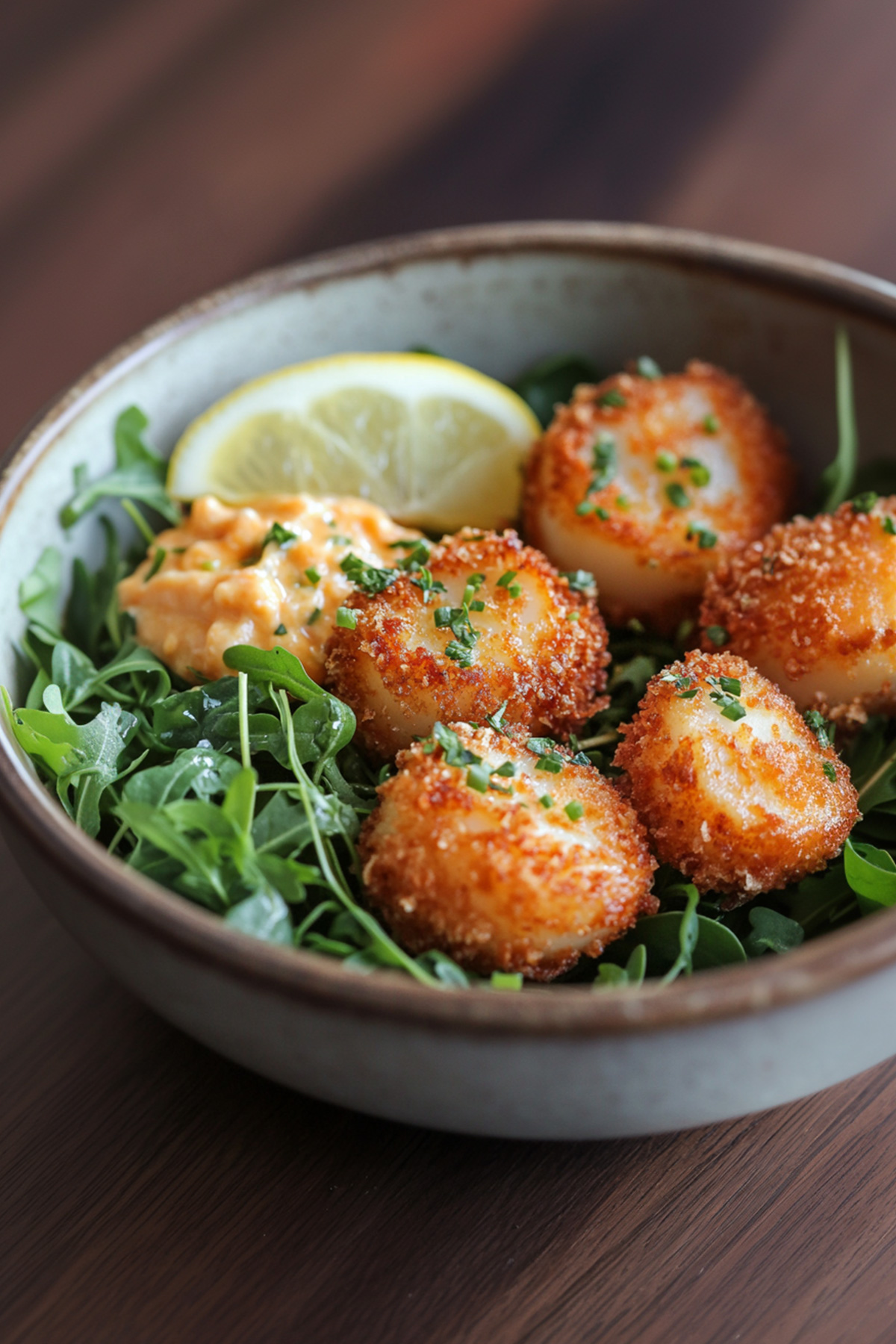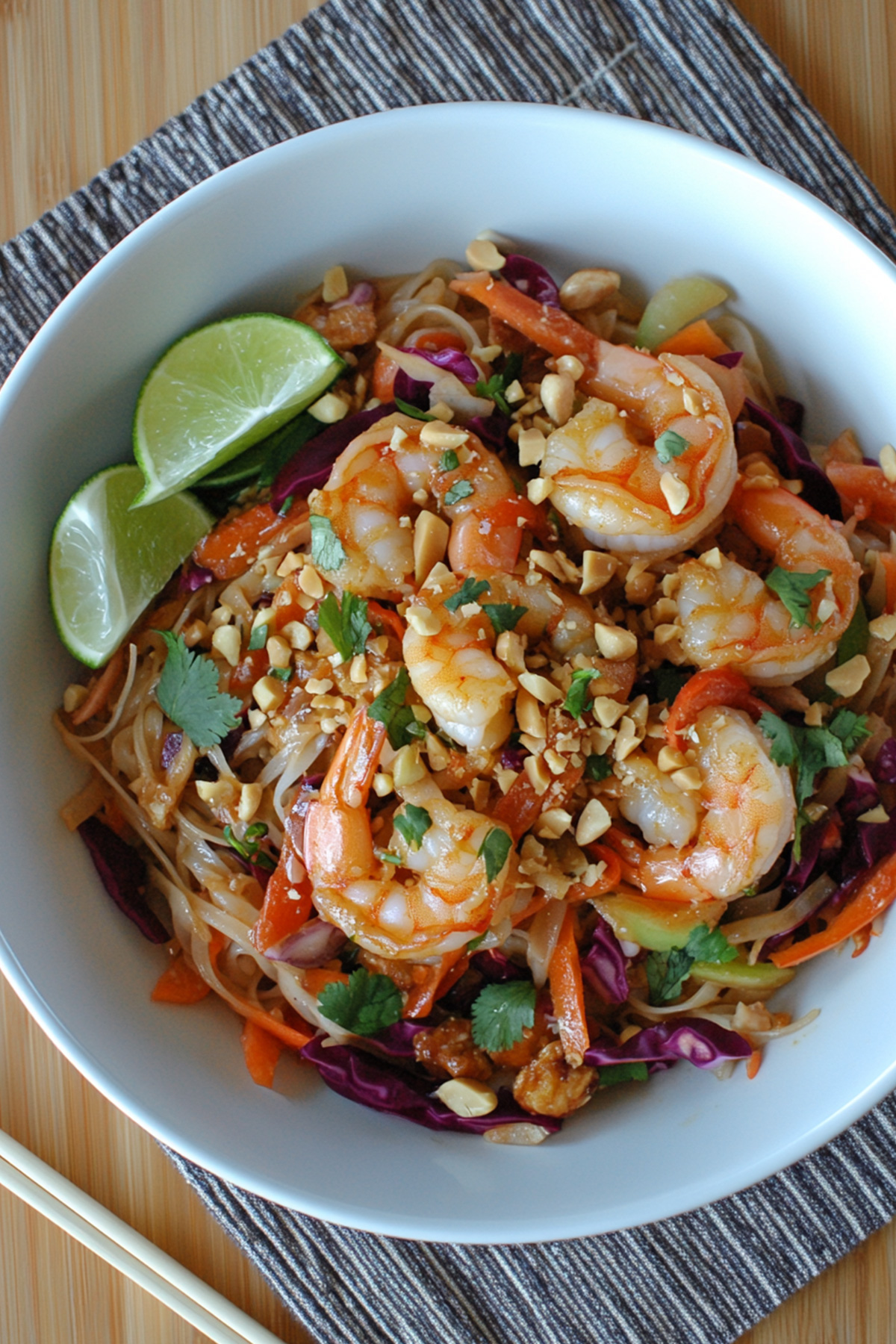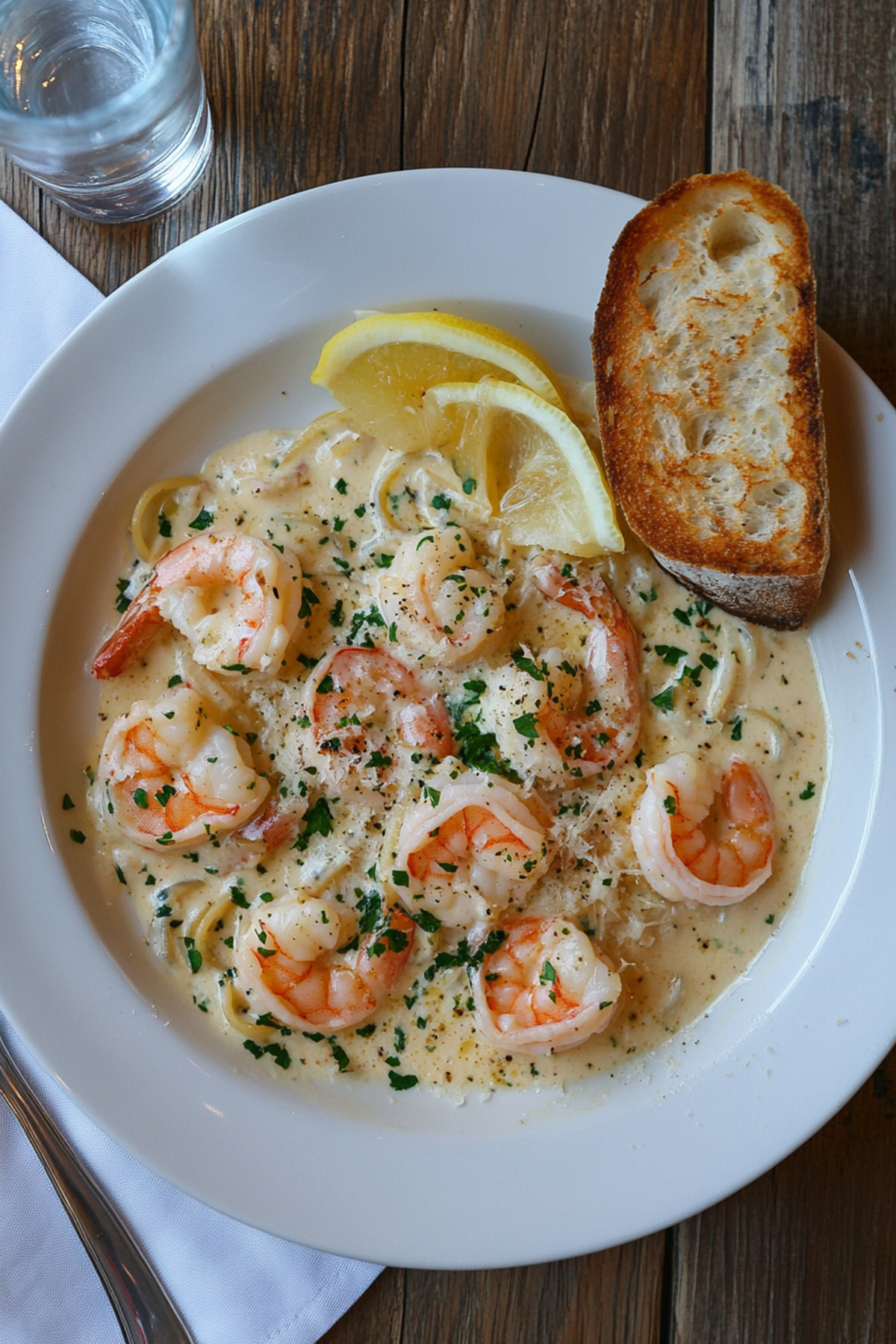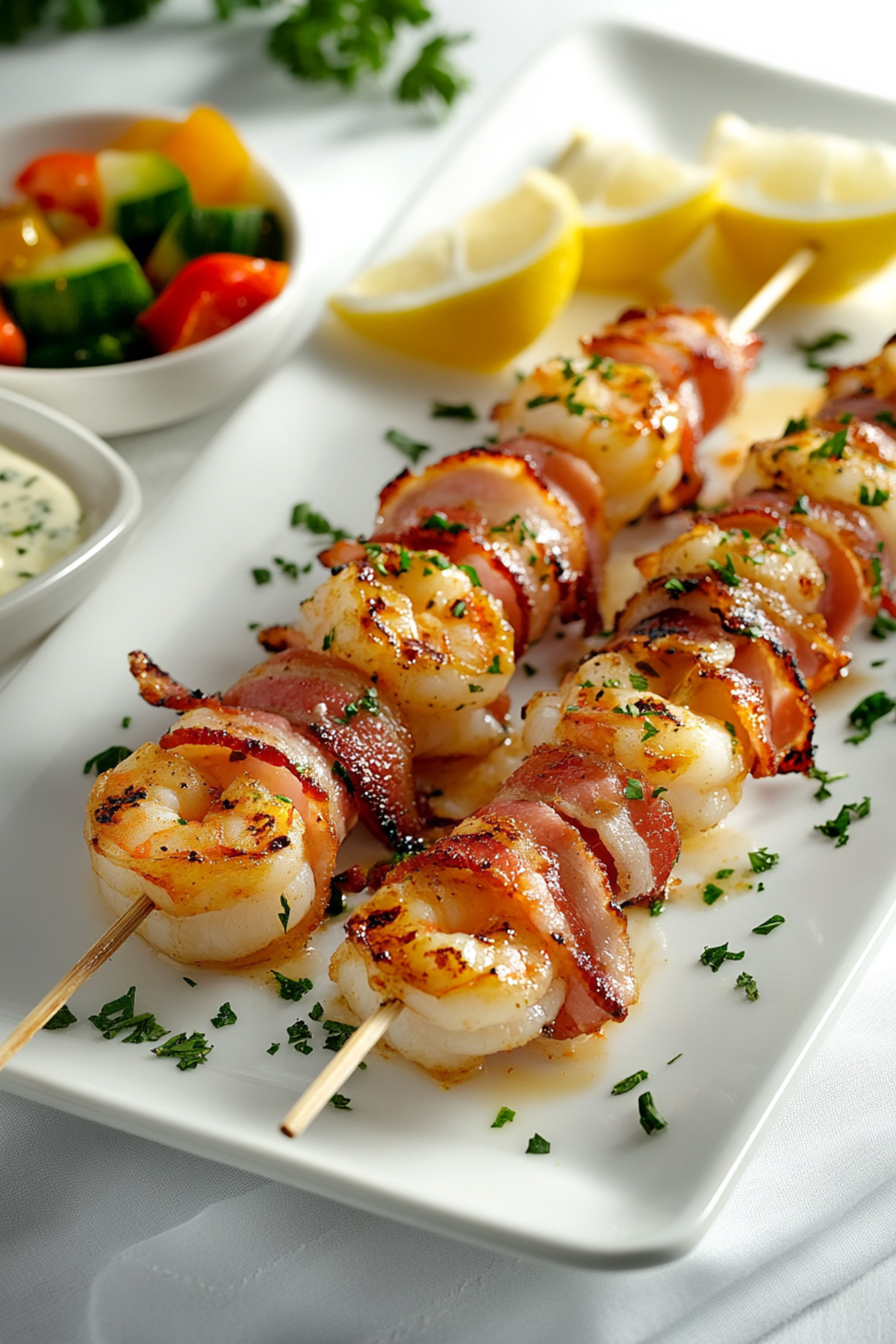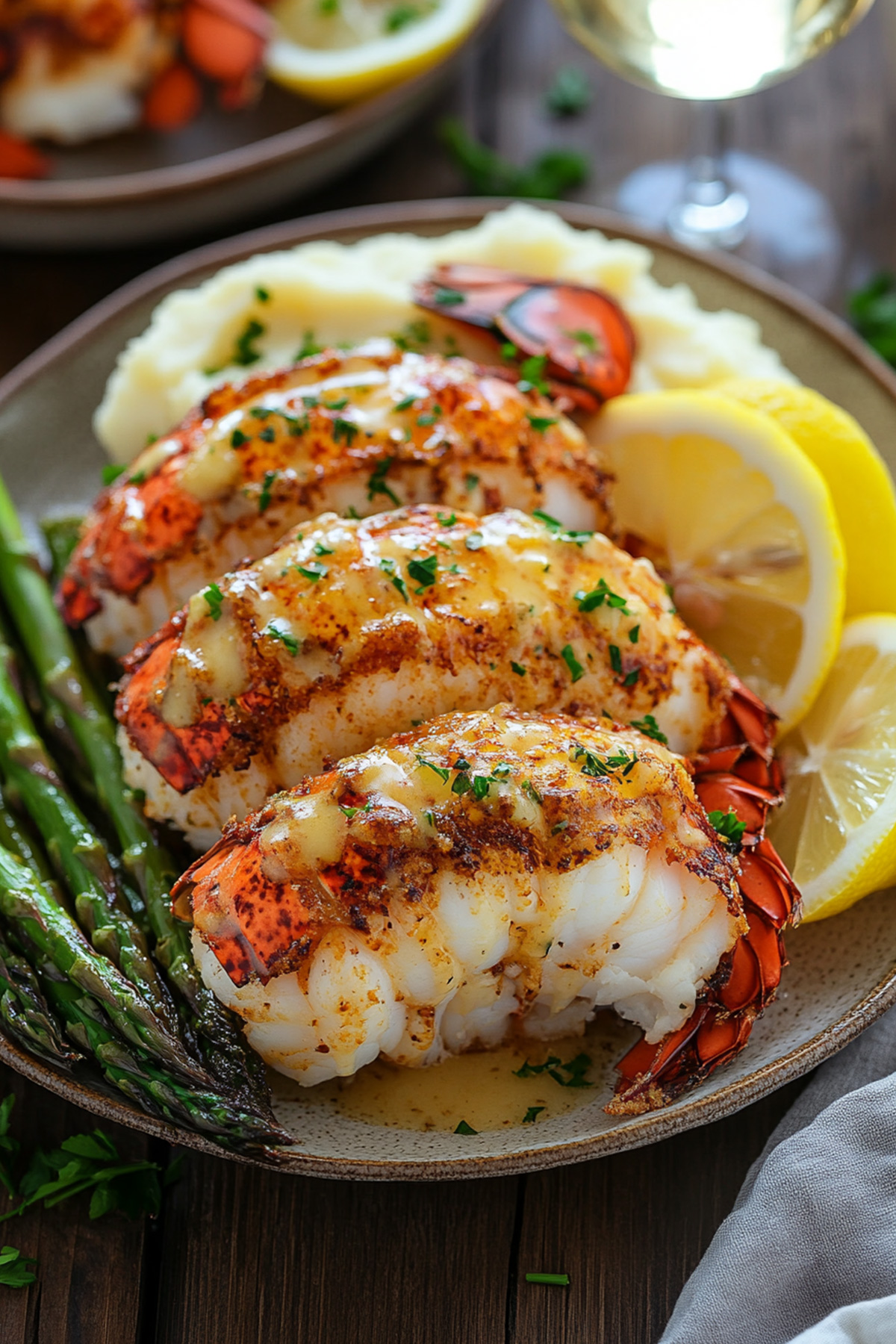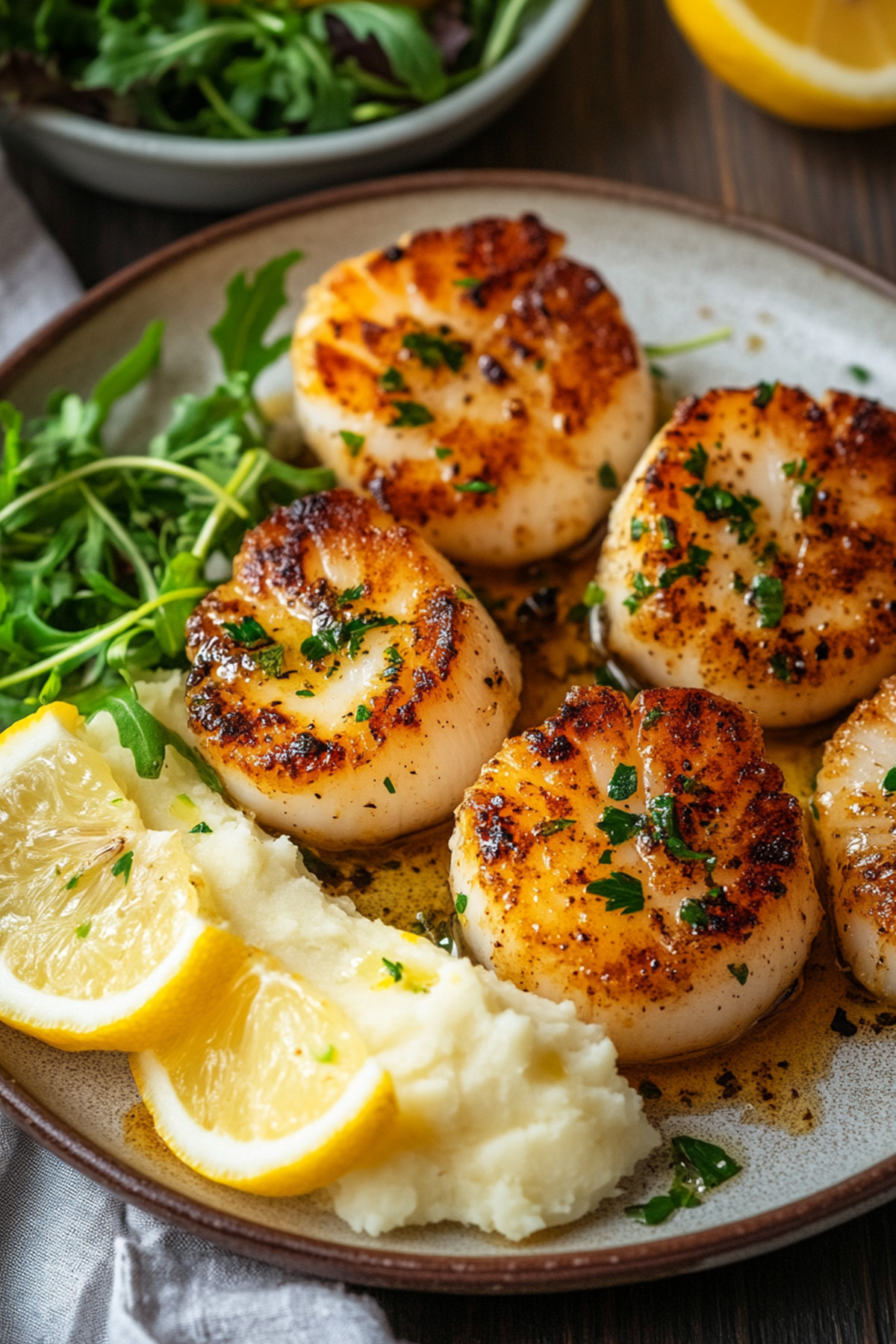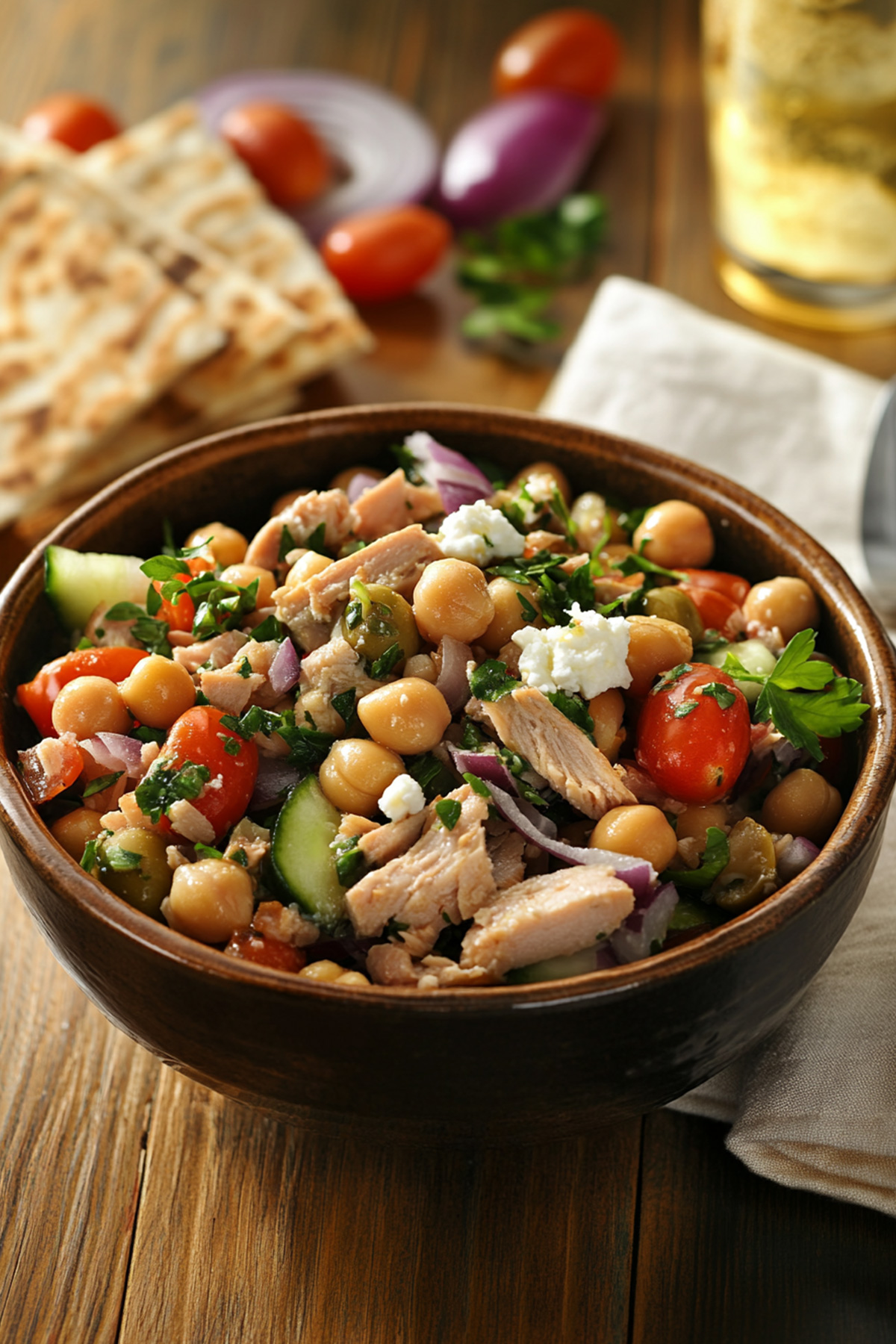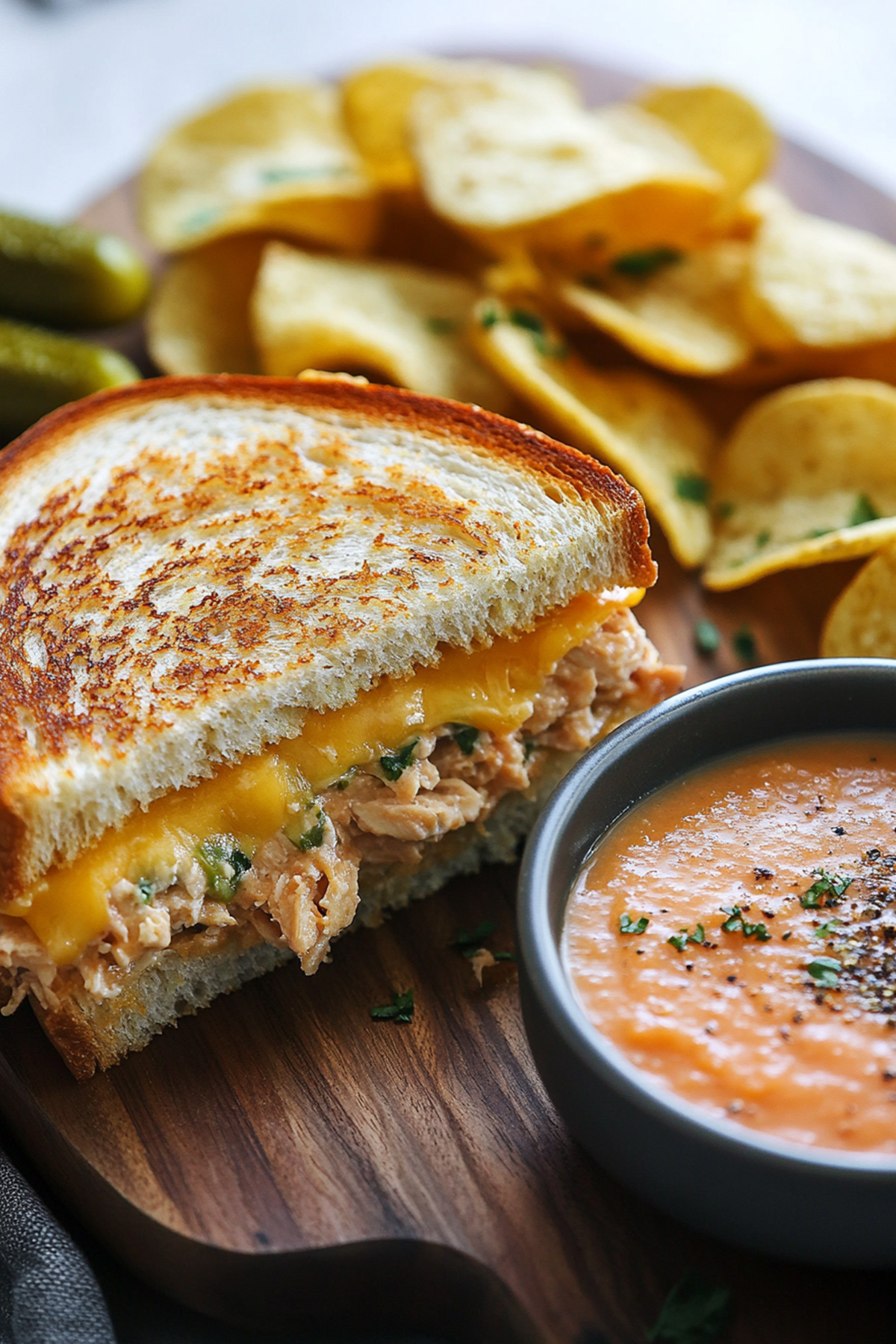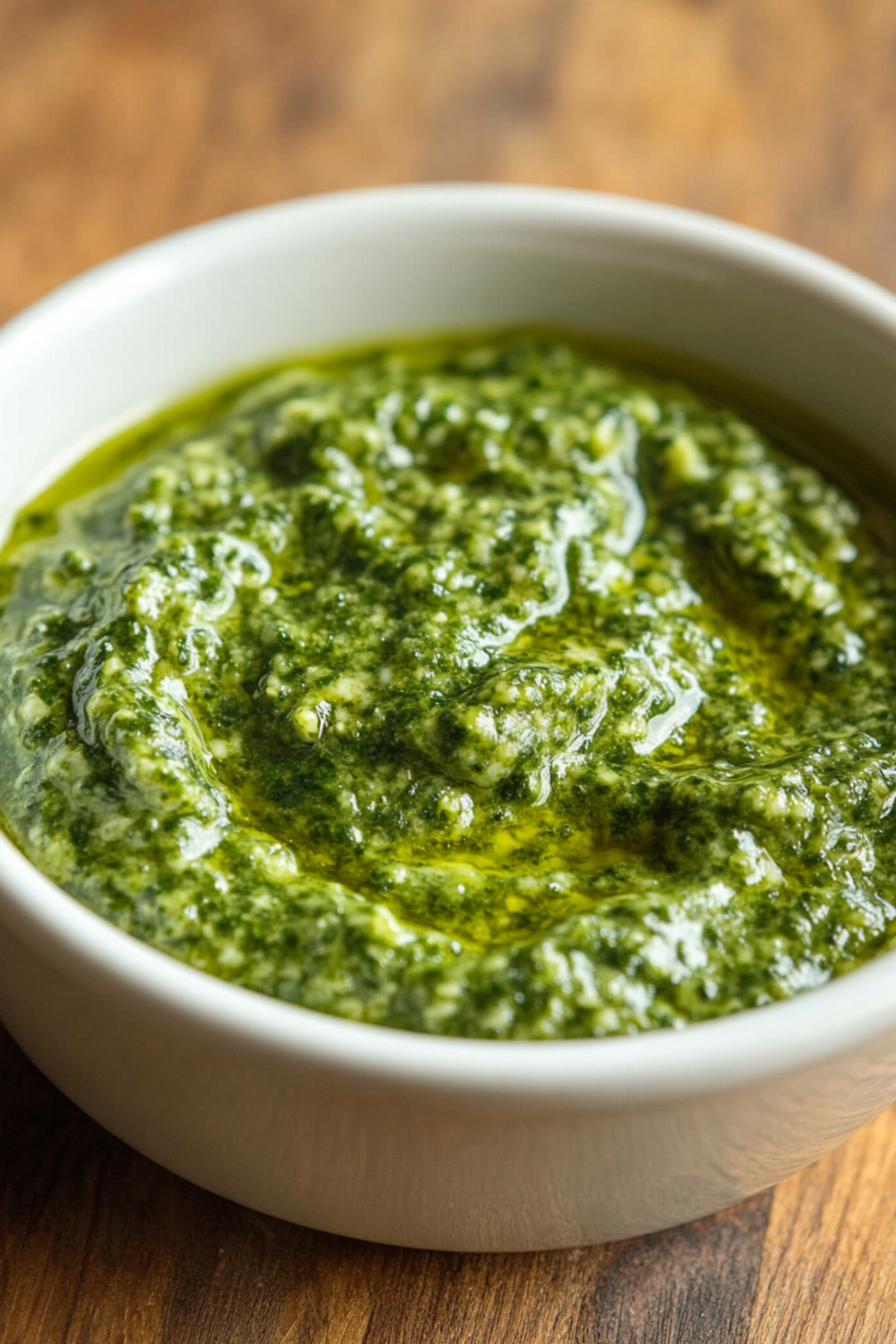Disclosure: As an Amazon Associate and participant in other affiliate programs, we earn from qualifying purchases. We only recommend products we believe will provide value to our readers.
Fried scallops transform from raw to golden-brown perfection in just minutes, making them an impressive yet surprisingly quick dinner option.
While their crispy breading and tender interior make them a beloved choice for family meals, achieving that perfect texture requires a specific three-step breading process: flour, egg, and breadcrumbs.
In fact, creating restaurant-worthy scallops at home is all about mastering a few key techniques. The secret starts before you even begin cooking – properly dried scallops and oil heated to exactly 340°F are essential for that coveted crispy exterior.
Additionally, knowing that a typical serving consists of 8 scallops per person helps you plan portions perfectly for your next seafood dinner.
In this comprehensive guide, you’ll learn the exact steps, techniques, and tips needed to prepare perfectly golden fried scallops every time.
From essential equipment to common mistakes to avoid, we’ll cover everything you need to know to achieve crispy, tender results.
Table of Contents
Essential Equipment for Perfect Fried Scallops
First and foremost, successful fried scallops require the right kitchen equipment. A heavy-bottomed stainless steel or cast-iron skillet forms the foundation of your setup. These pans distribute heat evenly, preventing hot spots that could lead to uneven cooking.
A reliable kitchen thermometer proves indispensable for maintaining the optimal frying temperature.
Moreover, you’ll need three shallow dishes for the breading station – one each for flour, beaten eggs, and breadcrumbs. These dishes should be wide enough to accommodate several scallops at once, streamlining your cooking process.
For handling the scallops, a spider strainer or long-handled tongs give you precise control when adding and removing them from hot oil.
Subsequently, you’ll want to prepare a landing zone with several layers of paper towels on a baking sheet, ready to absorb excess oil from your perfectly fried scallops.
Measuring tools play a crucial role in achieving consistency. A set of measuring cups and spoons ensures accurate portions for your breading ingredients. Particularly useful is a 2-cup liquid measuring cup for portioning oil into your pan.
Temperature control equipment deserves special attention. Beyond your thermometer, keeping a splatter screen handy protects you from hot oil while allowing steam to escape. This combination helps maintain steady oil temperature throughout the cooking process.
Organization proves key to success, so arrange your workspace with a small bowl for seasoning your flour, another for mixing spices, and a large platter for your finished scallops.
Having everything within arm’s reach creates an efficient workflow, letting you focus on achieving that golden-brown exterior you’re aiming for.
Read also: Smoked scallops Recipe
Remember to keep kitchen shears nearby for trimming any tough muscle attachments from your scallops before cooking. A timer, whether standalone or on your phone, helps track cooking duration precisely, though you’ll primarily rely on visual cues for doneness.
Common Mistakes When Frying Scallops
Mastering the art of frying scallops requires avoiding several common pitfalls that can affect your final results. Skipping the crucial step of patting your scallops dry stands as one of the most frequent errors.
Excess moisture prevents proper browning and creates unwanted steam, undermining that sought-after golden crust.
Temperature management often proves challenging for home cooks. Starting with oil that’s too cool leads to greasy, soggy scallops, furthermore, overheating the oil results in a burnt exterior and raw interior.
Your oil should maintain a steady temperature throughout the cooking process.
Overcrowding the pan ranks among the most detrimental mistakes. Each scallop needs adequate space to develop that perfect crust.
Placing too many scallops in the pan at once causes the oil temperature to drop dramatically, consequently leading to uneven cooking and steam-induced sogginess.
Poor timing during the breading process can sabotage your efforts. Letting breaded scallops sit too long before frying causes the coating to become gummy. Nevertheless, rushing through the breading steps results in uneven coating that may fall off during cooking.
Seasoning mishaps can significantly impact your results. Many cooks either under-season their breading mixture or wait until after cooking to add salt, missing the opportunity to build layers of flavor.
Instead, season each component – the flour, egg wash, and breadcrumbs – for the most flavorful outcome.
Flipping frequency presents another common error. Repeatedly turning the scallops disrupts the formation of the golden crust. Rather than constantly checking and flipping, allow each side sufficient time to develop proper color and texture.
Draining techniques also deserve attention. Placing fried scallops directly on paper towels can trap steam and soften the crispy exterior. Using a wire rack elevated over paper towels allows excess oil to drain while maintaining crispiness.
Understanding these potential pitfalls helps ensure your fried scallops achieve that perfect balance of crispy coating and tender interior. By avoiding these common mistakes, you’ll consistently produce restaurant-quality results in your home kitchen.
Read also: Golden Baked Scallops
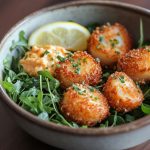
Crispy Fried Scallops
- Total Time: 20 minutes
- Yield: 4 servings 1x
Description
Creating perfectly crispy fried scallops requires precision in both ingredients and technique. This recipe delivers restaurant-quality results through a carefully crafted three-stage breading process and precise temperature control.
This classic fried scallops recipe yields golden-brown morsels with a satisfyingly crunchy exterior and tender, juicy center. The combination of seasoned flour and breadcrumbs creates an irresistible coating that seals in the scallops’ natural sweetness.
Ingredients
- 1 pound fresh scallops
- ½ cup all-purpose flour
- ½ cup breadcrumbs
- 1 tablespoon Old Bay seasoning
- 1 tablespoon garlic salt
- 1 large egg
- ¼ cup water
- 4 cups vegetable oil for frying
Instructions
- Rinse scallops under cold water and pat them completely dry with paper towels. Remove any tough white side muscle if present.
- Mix flour, garlic salt, and Old Bay seasoning in a shallow bowl.
- Whisk egg and water together in a separate bowl until well combined.
- Place breadcrumbs in a third bowl, creating your breading station.
- Heat oil in a heavy-bottomed skillet to 340°F.
- Dredge each scallop first in the seasoned flour mixture, then dip in egg wash, ultimately coating with breadcrumbs.
- Fry scallops in batches of 6-10 pieces, cooking for 2-3 minutes per side until golden brown.
- Transfer to paper towel-lined plate to drain excess oil.
Notes
- Maintain oil temperature between 250-300°F throughout cooking.
- Scallops cook quickly – they should be springy to touch and just warm in the center.
- Store leftovers in an airtight container for 1-2 days.
- Reheat in oven at 350°F for approximately 10 minutes.
- Prep Time: 15 minutes
- Cook Time: 5 minutes
- Category: Seafood
- Method: Frying
Best Side Dishes for Fried Scallops
Side dishes can make or break your fried scallops dining experience. A well-chosen accompaniment enhances the delicate seafood flavors without overpowering them. Naturally, light and fresh sides work best with these golden-brown delicacies.
Crisp vegetables provide an excellent textural contrast to tender fried scallops. Specifically, roasted asparagus spears or sautéed green beans maintain their crunch while complementing the seafood’s richness.
Roasted Brussels sprouts, with their slightly charred edges, add depth to your plate.
Starchy sides help balance the meal. A bed of creamy risotto serves as an elegant foundation, notably when prepared with white wine and herbs.
Alternatively, angel hair pasta tossed with olive oil and garlic offers a light yet satisfying base that lets your fried scallops remain the star.
Here are quick-fire pairing suggestions that enhance your seafood feast:
- Lemon herb quinoa
- Garlic mashed potatoes
- Grilled corn succotash
- Mediterranean couscous
- Citrus arugula salad
Fresh salads essentially cleanse the palate between bites. A simple mix of butter lettuce, shaved fennel, and citrus segments cuts through the richness of fried foods. Primarily, choose light vinaigrette dressings over creamy options to maintain balance.
Sauce selection deserves careful consideration. A bright remoulade or subtle aioli complements without masking the scallops’ natural sweetness. For those seeking heat, a dash of sriracha mayo adds excitement without overwhelming the delicate seafood flavors.
Consider seasonal vegetables to round out your plate. Summer brings opportunities for grilled zucchini and yellow squash, while autumn welcomes roasted root vegetables. These thoughtful pairings create a complete dining experience that highlights your perfectly fried scallops.
Color also plays a crucial role in presentation. Bright green vegetables and vibrant citrus garnishes create visual appeal against the golden-brown scallops. This attention to plating transforms your home-cooked meal into a restaurant-worthy experience.
Read also: Air Fryer Scallops Recipe
Remember that portion size matters when selecting sides. Your accompaniments should support rather than compete with the scallops. A good rule of thumb suggests keeping side portions modest, allowing the seafood to remain the focal point of your plate.
Wine and Beverage Pairing with Fried Scallops
Selecting the perfect beverage to accompany your fried scallops elevates the entire dining experience. Crisp white wines stand out as natural companions, chiefly because their bright acidity cuts through the rich, breaded exterior while complementing the sweet, delicate meat inside.
Chardonnay, albeit controversial among some wine enthusiasts, proves an excellent match when served properly chilled.
Oak-aged varieties bring subtle vanilla notes that harmonize with the golden-brown coating, coupled with enough body to stand up to the fried preparation.
Sauvignon Blanc offers a lighter alternative, its citrus notes and mineral undertones providing a refreshing counterpoint to each bite.
Accordingly, Spanish Albariño and French Chablis showcase similar characteristics – their clean, crisp profiles cleanse your palate between bites.
For those who prefer red wine, opt for lighter varieties. Pinot Noir, served slightly cool, brings subtle fruit flavors without overwhelming the scallops’ natural sweetness. Comparatively, Beaujolais offers a fruit-forward option that won’t compete with your seafood’s delicate flavors.
Sparkling wines deserve special consideration. Prosecco or Cava provide effervescence that contrasts beautifully with the crispy coating. Their tiny bubbles help cleanse your palate, making each bite taste as fresh as the first.
Beyond wine, certain craft beers complement fried scallops admirably. Belgian wheat beers or German pilsners offer refreshing alternatives with their light, crisp profiles. Their subtle hop character and clean finish enhance rather than mask the seafood’s natural flavors.
Non-alcoholic options shouldn’t be overlooked. Sparkling water with a twist of lemon maintains the meal’s sophistication while providing refreshing contrast. Fresh-squeezed lemonade, when properly balanced between tart and sweet, cuts through the richness of fried foods effectively.
Temperature plays a crucial role in beverage service. White wines should be served between 45-50°F, reds slightly warmer at 55-60°F.
This careful attention to serving temperature ensures your chosen beverage performs optimally alongside your perfectly fried scallops.
Consider garnishing your beverages to complement your meal. A thin lemon wheel or fresh herb sprig adds visual appeal and aromatic elements that enhance both drink and dish. These thoughtful touches transform a simple pairing into a complete sensory experience.
Health Benefits of Scallops
Beyond their delectable taste, scallops pack a powerful nutritional punch that makes them a smart addition to your diet. These seafood delicacies serve as an excellent source of lean protein, providing approximately 20 grams of protein per 3-ounce serving while containing minimal fat.
Primarily valued for their mineral content, scallops deliver significant amounts of selenium and zinc, which support your immune system function. These minerals work simultaneously with vitamin B12, found abundantly in scallops, to maintain healthy nerve function and aid in producing red blood cells.
Undoubtedly, one of the most beneficial aspects of scallops lies in their omega-3 fatty acid content. Although the frying process might slightly reduce these beneficial fats, properly cooked scallops still retain much of their heart-healthy properties.
These essential fatty acids play a crucial role in brain function and reducing inflammation throughout your body.
The magnesium content in scallops deserves special attention, as this mineral supports muscle function and energy production. A single serving provides roughly 15% of your daily magnesium needs, making them an efficient source of this vital nutrient.
Phosphorus, another mineral found generously in scallops, strengthens your bones and teeth while supporting kidney function. This mineral works in tandem with calcium to maintain proper bone density and structure.
Iodine presence in scallops supports proper thyroid function, which regulates your metabolism. Since many people lack sufficient iodine in their diets, incorporating scallops can help maintain optimal thyroid health.
The low caloric content of scallops makes them particularly appealing for those watching their weight. A typical serving contains approximately 140 calories before frying, making them a protein-rich option that fits well into various dietary plans.
Antioxidants present in scallops help protect your cells from damage caused by free radicals. These compounds may help reduce the risk of certain chronic diseases and support overall cellular health.
Trace minerals like copper and selenium in scallops contribute to collagen production and maintenance of healthy skin. These elements also support your body’s natural antioxidant systems, helping protect against oxidative stress.
The amino acid profile of scallops includes all essential amino acids your body needs but cannot produce on its own. This complete protein source supports muscle maintenance, immune function, and tissue repair throughout your body.
References:
– WebMD
– Oh my facts
Remember that while frying adds calories and fat, you can still enjoy the nutritional benefits of scallops by practicing portion control and using proper cooking techniques. Pairing your fried scallops with nutrient-rich vegetables maximizes the overall nutritional value of your meal.
Nutritional Information
Understanding the nutritional profile of fried scallops helps make informed dietary choices. A standard serving size of 3.5 ounces (100 grams) provides valuable insights into this seafood delicacy’s nutritional composition.
The caloric content varies based on cooking method and breading used. Pan-fried scallops typically contain 190-220 calories per serving, with breaded and deep-fried versions reaching up to 290 calories.
The protein content remains substantial at 15-18 grams per serving, making them an excellent source of this essential macronutrient.
Fat content deserves careful consideration. Pan-fried scallops contain 8-10 grams of total fat, primarily from the cooking oil.
Deep-fried versions may contain 12-15 grams, depending on breading thickness and oil absorption. The carbohydrate content ranges from 12-20 grams, mainly from the breading.
Here’s a detailed breakdown of key nutrients per 3.5-ounce serving:
| Nutrient | Amount |
|---|---|
| Calories | 190-290 |
| Protein | 15-18g |
| Total Fat | 8-15g |
| Carbohydrates | 12-20g |
| Dietary Fiber | 0.5-1g |
| Cholesterol | 50-55mg |
| Sodium | 580-650mg |
Micronutrient content remains relatively stable regardless of cooking method. Each serving provides 35% of daily vitamin B12 needs, supporting nervous system function. Iron content reaches 15% of daily requirements, aiding oxygen transport throughout your body.
Sodium levels warrant attention, ranging from 580-650mg per serving. This represents roughly 25% of recommended daily intake, making portion control crucial for those monitoring sodium consumption.
The breading process typically adds 150-200mg of sodium beyond the natural content of scallops.
Mineral composition includes trace elements vital for health maintenance. Zinc content averages 1.8mg per serving, supporting immune function. Selenium levels reach 20mcg, offering antioxidant benefits. Phosphorus content remains stable at 240mg, contributing to bone health.
Fat-soluble vitamins, including A and D, show minimal losses during frying. Each serving maintains approximately 80 IU of vitamin D, supporting calcium absorption. Vitamin A content reaches 150 IU, benefiting eye health and immune function.
Portion size significantly impacts nutritional intake. Restaurant servings often exceed standard portions, potentially doubling caloric content. Home preparation allows better control, with 4-5 medium scallops typically constituting one serving.
The cooking oil choice influences fatty acid composition. Using heart-healthy oils like olive or avocado oil provides beneficial monounsaturated fats. These oils contribute 4-5 grams of healthy fats per serving when used judiciously.
Cholesterol content remains moderate at 50-55mg per serving, fitting within daily recommendations for most healthy adults. The protein quality ranks high, providing all essential amino acids in balanced proportions.
Water content decreases during frying, concentrating nutrients slightly. Fresh scallops contain 75-80% water, reducing to 65-70% after cooking. This concentration effect enhances mineral density per serving.
Tracking portions helps manage nutritional intake effectively. One cup of fried scallops weighs approximately 150 grams, delivering 285-330 calories depending on preparation method. This measurement provides a practical reference for portion control.
The glycemic impact remains moderate, with a glycemic index around 50-55. This moderate rating results from protein content balancing carbohydrates from breading. Pairing with fiber-rich vegetables further moderates blood sugar response.
References:
– Healthline
– Medical News Today
Conclusion
Mastering crispy fried scallops requires attention to detail, though the results certainly justify the effort. Armed with the right equipment and techniques, you’ll create restaurant-quality seafood that balances a golden-brown exterior with tender, sweet meat inside.
Temperature control stands as your key ally, while proper breading technique ensures that perfect crunch.
Though fried scallops might seem indulgent, their impressive protein content and essential nutrients make them a worthwhile addition to your meal rotation.
Paired with light sides and crisp wines, these golden morsels become the centerpiece of an elegant dinner. Remember that success lies in avoiding common pitfalls – particularly maintaining proper oil temperature and avoiding overcrowding your pan.
Start with small batches as you perfect your technique. Once you’ve mastered the basics, experiment with different seasonings and side dishes to create your signature scallop dish. These versatile seafood bites will undoubtedly become a treasured recipe in your cooking repertoire.

